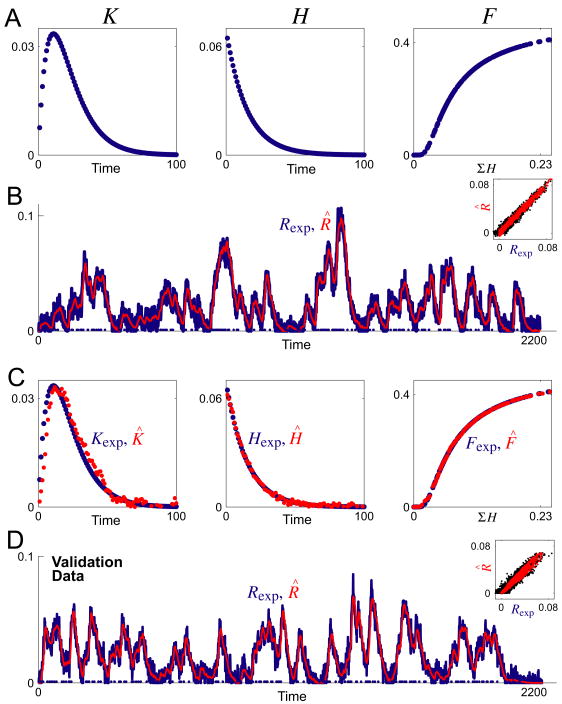Fig. 8.
Decoding of noisy synthetic data. As in Fig. 3, but with random noise added to the overall response Rexp before decoding. A noise-free Rexp, for 200 spikes at r = 0.1 in these datasets, was first constructed from the functions Kexp, Hexp, and Fexp in panel A, identical to those in Fig. 3A. In each time bin, a different random number drawn from a Gaussian distribution with zero mean and a given standard deviation was then added to the noise-free Rexp to construct a noisy Rexp (blue curve in panel B). The RMS amplitude of the noise, that is, the RMS difference between the noise-free and noisy Rexp, was computed analogously to the RMS error ER using the equivalent of Eq. 9. In panel B, the amplitude of the noise was 22.1%. The algorithm then decoded the noisy Rexp to estimate R̂ (red curve in panel B). The inset in panel B plots R̂ against the noisy Rexp (black dots) as well as against the underlying noise-free Rexp (red dots). The error ER of R̂ relative to the noisy Rexp was 25.2%, but relative to the noise-free Rexp only 12.4%. In panel C, EK was 31.6%, EH 9.8%, and EF 1.7%. For the validation data in panel D, the noise amplitude was 24.1%, ER relative to the noisy Rexp 24.9%, and ER relative to the noise-free Rexp 11.9%. Time is in time bins of duration Δt and amplitude is in arbitrary units.

